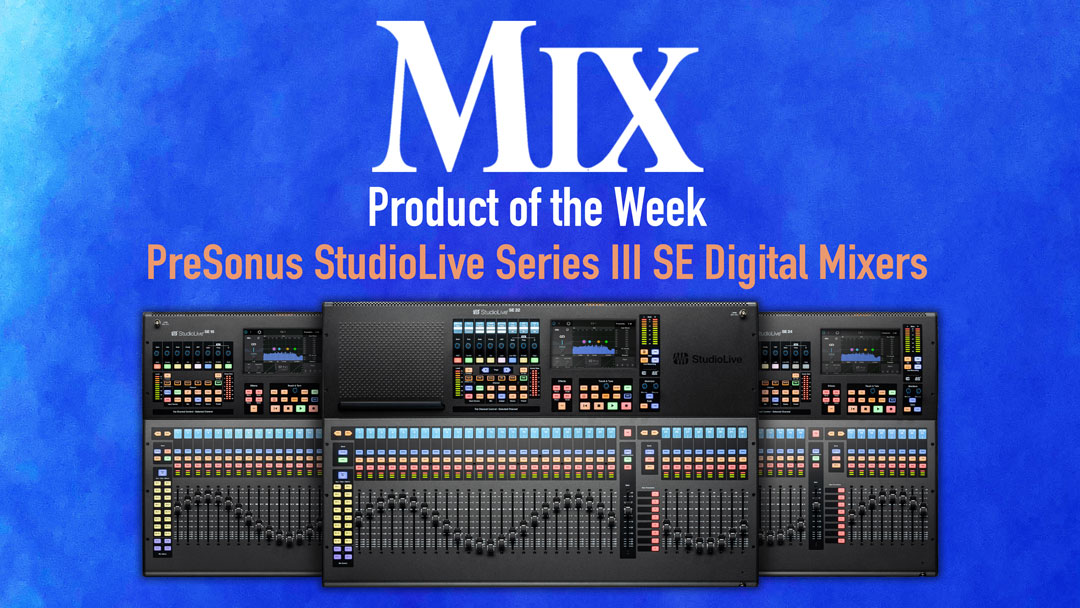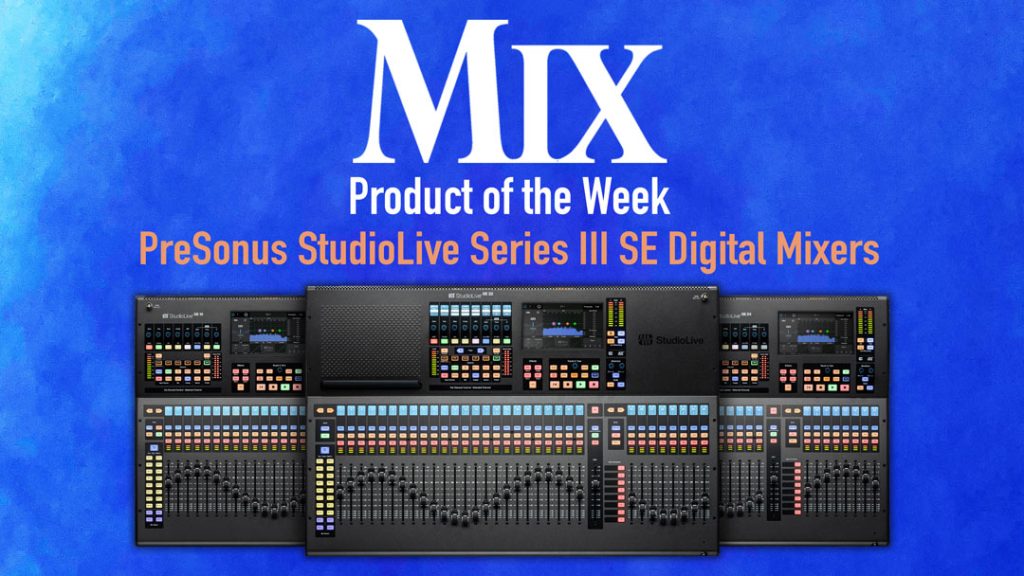
New York, NY (August 14, 2025)—PreSonus has unveiled a new line of digital mixers, StudioLive Series III SE, with three new models—SE 16, SE 24 and SE 32—offering 16-, 24- and 32-fader work surfaces, respectively, plus a dedicated master fader.
All models can manage 40 input channels and 16 FlexMixes, which are buses that can be set up as aux sends, subgroups or matrix mixers, enabling Series III SE mixers to accommodate a wide variety of workflows. Four dedicated effects buses add reverb and delay without sacrificing a monitor mix, and subgroups enable easy management of large instrument groups such as drums or background vocals. All models feature 24 DCAs.
PreSonus, Fender Team Up for Fender Studio DAW
Series III SE digital mixers allow any of four sources to be patched to any channel: analog inputs, AVB, USB or SD card. These inputs can be instantly switched, facilitating virtual soundchecks or routing audio to networked devices. StudioLive SE 16 features 16 microphone inputs (XLR), 8 line inputs (combo jacks), dual stereo aux inputs (TRS), and a stereo RCA “tape in;” outs include 10 mix outputs (6 XLR, 4 TRS), a stereo output (XLR), mono output (XLR), monitor outs (TRS), and “tape out” (RCA).
StudioLive SE 24 and SE 32 augment the microphone input count to 32 and the mix output count to 16 (12 XLR, 4 TRS), while adding 4 TRS subgroup outputs.
Mic preamps are PreSonus’ XMAX-Remote preamps. which provide analog tone with digital recall. Studio-grade 32-bit floating-point DSP delivers precise processing, and 115 dB A/D/A converters and low-jitter clocking ensure a wide dynamic range. Digital connections include AES, AVB, Control and USB.
Series III SE mixers integrate seamlessly with PreSonus Studio One Pro and Capture; a 64×64 bidirectional audio interface makes recording individual channels and routing to plug-in racks easy. Playback streams appear instantly with a single button (no extra routing needed).
Discover more great stories—get a free Mix SmartBrief subscription!
The mixers support custom fader layouts and a user layer for fast access to critical channels. Soft patching enables a user to route the same source to multiple channels for parallel processing or for independent FOH and monitor mix control. User profiles and permissions give administrators full control and the ability to lock access to EQ, dynamics, gain staging, scenes, projects and level limits.

